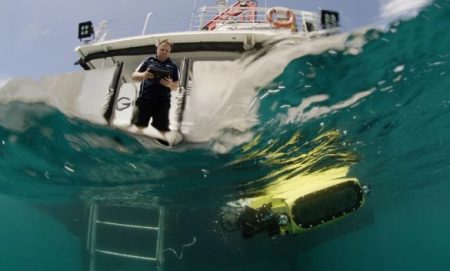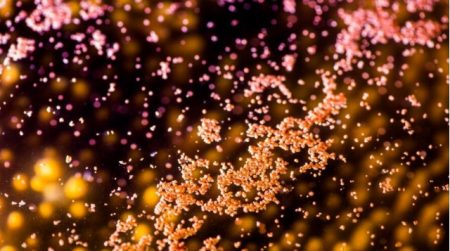November 5, 2018 – An experimental robot is about to attempt to save the Great Barrier Reef.
How? By seeding it with 1.2 million coral larvae.
Developed in cooperation by both Queensland and Southern Cross Universities in Australia, several LarvalBots will be deployed to deliver millions of coral larvae to damaged reef areas with the goal to give nature a booster shot. This month as many as three LarvalBots will be sent out to the Great Barrier Reef.
Matthew Dunbabin, who heads up the team at Queensland University, states “During operation, the robots will follow preselected paths at constant altitude across the reef and a person monitoring will trigger the release of the larvae to maximize the efficiency of the dispersal.” The initial test will cover almost 3,900 square kilometers (1,500 square miles) of the reef.

If successful a wider distribution employing more LarvalBots could be just what the Great Barrier and other coral reefs need in the face of bleaching from warming and acidifying oceans.
The technique involves rearing the baby corals en masse in floating enclosures which takes between 5 and 7 days. The larvae are then stored onboard the robot and released as a larval cloud over damaged areas of the reef. The key to success is having the LarvalBot release coral larvae on dead reef areas and allowing it to settle before it can then transform into polyps to form coral colonies that will become within three years self-sustaining and sexually reproductive.
Why November as the starting date? On the Great Barrier Reef each November the corals spawn. Scientists from around the world come to study the reproductive process. This synchronized spawning event seems like a good time for humans to offer a helping hand and improving the odds for the endangered reef to recover and grow.

The LarvalBot is a companion to a robot named RangerBot, also developed at Queensland University. RangerBot shares the design and functionality of its cousin. The two can operate autonomously over a reef area for up to eight hours before needing a recharge. Where LarvalBot delivers the possibility of new life to the reef, RangerBot carries on board a deadly toxin to kill reef-destroying crown-of-thorns starfish.
The rise in ocean temperatures off the Australian coast has led to overpopulation of crown-of-thorns starfish. They eat coral and have been described as chewing their way through reefs at an astonishing rate.
RangerBot identifies the starfish with 99.4% accuracy and when it does uses an injector, the same one used to deliver millions of coral larvae to dead reef areas, to deliver the toxin designed and developed to kill only targeted starfish. This a cull, not an attempt to cause the extinction of the crown-of-thorns. If we can cool down the oceans a bit, the imbalance in the coral ecosystem could be restored.















